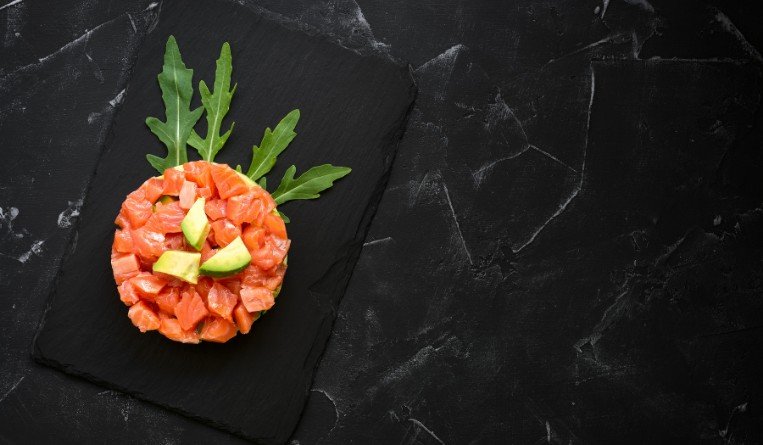Tricky strategic decisions as the world recovers from the Covid-19 pandemic await one part of the air cargo industry, an audience at the Future of Norwegian Seafood Air Logistics webinar heard.
While the outlook for the sector is generally considered to be bright, problems of capacity, cost, rule changes and sustainability will need to addressed in order to keep on top of booming Asian demand.
“We have a lot of challenges,” said Svein Ruud, CEO of Norwegian King Crab in Oslo.
There are specific problems about the movement of live seafood – the next market segment likely to develop – but the real and widespread general problem is limited capacity and its cost, which is made worse by the lack of flexibility, connection times and ground handling procedures as import rules are tightened.
China is case in point. Previously, it took seafood imports at more than 10 airports. Now, in a bid to keep food imports safer, seafood can only be imported through four gateways – Shanghai, Shenzhen, Guangzhou and Hong Kong – said Dennis Cai, COO of fish importer Chuner Group in Shanghai.
Also looming large is the issue of capacity and its cost as the return of passenger lift brings more flights – but very different dynamics back – into the market. New capacity is going to leisure destinations first with most passenger long-haul yet to materialize, meaning bellyhold capacity gets given over to moving suitcases rather than cargo. On top of this, sometimes there are not enough passengers to kickstart key destinations, such as the United States.
“[An increase in passenger flights] doesn’t necessarily mean there will be more lift,” Rob Veltman, Qatar Airways’ vice president for cargo, Europe, told the webinar.
What is likely? A return to what was normal will be slower in arriving than many exporters hope. “At least a year or two, maybe even three before its back to the old level,” Veltman said.
And as Max Knagge, president and CEO of SAS Cargo, also said: when passengers do come back, a changed airline industry, “can affect where and from we are flying.”
There is a particularly Norwegian angle to this. Much of the seafood Norway exports is salmon farmed in the north of the country and then trucked down to Oslo, and sometimes to Copenhagen or to Helsinki. One figure given was that 60% of Norwegian seafood is trucked elsewhere.
Those trips can sometimes add a day to the journey, something which impacts price and quality, but cutting that day out by putting the salmon on a plane is much more expensive.
Qatar Airlines has eased the problem temporarily with three weekly flights served by Boeing 777-300 passenger freighters to Harstad/Narvik Airport (EVE) in Evenes in northern Norway, providing over 150 tonnes of cargo capacity for exporters from northern Norway each week. Seafood and salmon will account for the majority of exports on these flights.
(Details like this have allowed Qatar to consolidate its position as one of the bigger cargo airlines. It now moves more than 9% of worldwide cargo, up from 6.8% previously and has been, in Veltman’s words, one of the airlines “most unaffected” by Covid-19.)
During the pandemic, a debate has opened about the most sustainable way to develop the business and the need for facilities nearer the fish farms – areas with few tourists and even fewer business travellers.
Who pays and where exactly those facilities should be is complicated by the lack of an obvious inbound market, although Veltman reported QR was moving up to 1,000 tons per flight into Norway.
“There’s enough capacity going in, but not flown in,” he said. “You need to be full in and you need to be full out.”
These issues matter vitally in Asia and China, especially. In the first 20 weeks of 2021, Norway exported 56,426 metric tonnes of seafood to China, up 32% over the same time frame last year, Victoria Braathen, China director for the Norwegian Seafood Council, told the webinar.
The expectation is that increasingly health-conscious Chinese consumers will keep this market rolling, although such growth will not be without problems.
One of the big issues here is a simple enough substance: ice. China has a very strong preference for fresh salmon, which makes speed of the essence, but there is also a ruefulness throughout the industry about how much space and money is used to move what is essentially just frozen water.
Another three-letter word – t-a-x – is also a problem, according to Chuner Group’s Cai. One limitation on the Norwegian seafood industry is that Norway is in the process of signing a free trade agreement with China, unlike three of its rivals, which already have duty-free access.
“The future for Norwegian seafood will be enormous when Norwegian seafood can also enjoy zero duty,” said Cai, adding that taxes are currently “pretty much 20%.”
The basic problem with expansion, though, remains cost-effective capacity – something that might prove elusive for the time being, and not just in China.
“One concern I have is air logistics,” said Sang-Ik Chung, CEO and founder of South Korea’s Myung Jin Holdings in Seoul. The company currently imports 600 tonnes of seafood a week, but Chung believes that number could rise to 1,000 tonnes per week, providing cost and capacity problems are tackled.
Not only is Incheon the only effective hub for South Korea, but there is only one direct (and already loaded) Norway to South Korea flight a week. “It is almost impossible to get space on that flight,” said Chung, which means the volumes have to come on other carriers with delays and stopovers.
“I have my worries on this. If our cost goes up, Norwegian seafood might lose its market in South Korea,” he said.
And maybe not just there.
Michael Mackey



